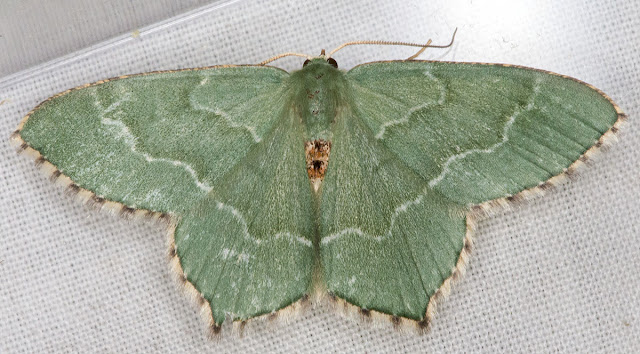 |
| Common Emerald, Hemithea aestivaria. Jubilee Country Park, 6 July 2012. |
On the evening of 6th July, a handful of people gathered in the Tent Peg Lane car park just as dusk approached. Regardless of gender, they were all mothers - people with an interest in moths. And the plan was to spend several hours enticing moths to light traps, to record and photograph them.
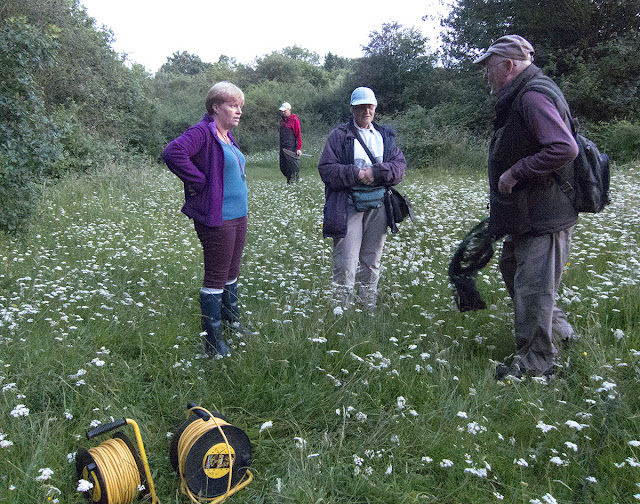 |
| Mothers in Jubilee Country Park, after sunset, 6 July 2012. |
Here are some of them, in a meadow full of the park's famous Corky-fruited Water-dropworts. Some have nets and are taking advantage of the remaining light to sweep for insects. The coils of wire were soon to take power from a generator to the traps, powering the lights.
I stayed mostly with David Gardner, chair of the Kent branch of Butterfly Conservation, who has an ingeniously designed trap and who placed it in the woods. Moths kept coming, and David could tell us what they were, even the titchy micromoths, some of which were so small that I didn't even try to photograph them. But we also saw some pretty and unusual larger moths.
The Common Emerald at the top is a nice fresh specimen. The green colour fades quite fast in moths, and this one can not have been flying for long.
Here's another green one:
 |
| V-pug, Chloroclystis v-ata. Jubilee Country Park, 6 July 2012. |
A V-pug, a small but pretty moth with an unusual name. It's one of a group known as Pugs, many of which are hard to tell apart, but this one is easy because of its green colour, its habitual wings-up stance, and the black V-mark you can see on its wing. (Later addition: This one looks just like Piglet!)
Of course, they weren't all green.
 |
| Common White Wave, cabera pusaria. Jubilee Country Park, 6 July 2012. |
These three are from the family Geometridae, often called Geometers. There were also some Noctuids, family Noctuidae, like this Clay:
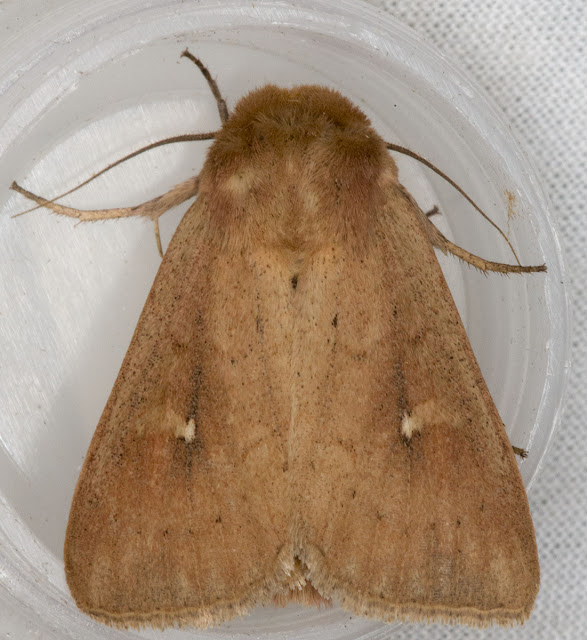 |
| Clay, Mythimna ferrago. Jubilee Country Park, 6 July 2012. |
Noctuids typically rest with their wings folded back and flat, like this, making a triangle. So do the Thyatiridae:
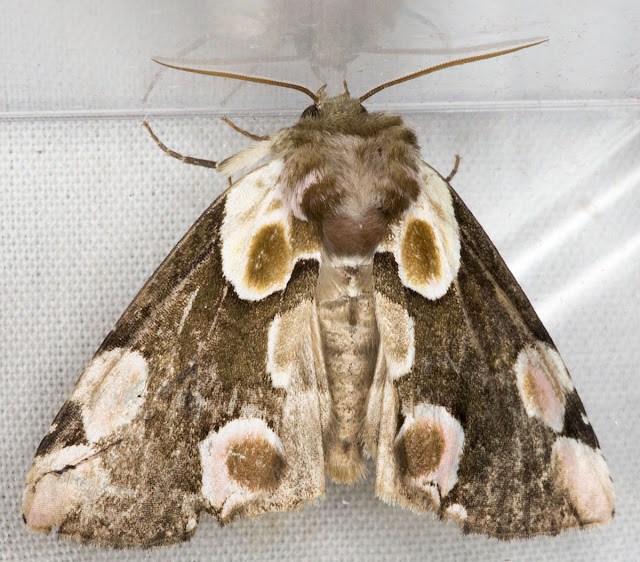 |
| Peach Blossom, Thyatira batis. Jubilee Country Park, 6 July 2012. |
And we also saw lots of so-called micromoths. These actually vary a lot in size, but most of them are quite small.
 |
| Variegated Golden Tortrix, Archips xylosteana. Jubilee Country Park, 6 July 2012. |
This pretty Tortrix is quite small, about 1 cm long. This last one is noticeably smaller; and as I said, I didn't even try to photograph the tiniest ones.
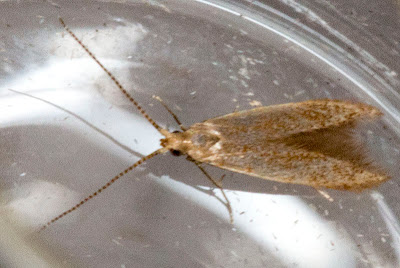 |
| Coleophora species. Jubilee Country Park, 6 July 2012. |
You can see these and quite a few more photos in this web album:
Jubilee Country Park moths, July 2012.








Those are just lovely.
ReplyDelete